
Table of Contents
Brightlio’s Ultimate Guide To Colocation
Colocation is one of the core areas of expertise at Brightlio. Our founder was the President & Chief Operation officer of a global colocation provider. We put together this “Ultimate Guide to Colocation” to help you better understand the colocation market and find data center solutions that meet your needs.
Are you interested in learning more? We would love to hear from you. Our team provides competitive data center quotes from our industry-leading list of global partners. Contact us today for a complimentary quote or solution design.
What is Colocation?
Colocation is the practice of housing servers, storage, and networking equipment in a third-party data center. The practice is called colocation because your equipment is located with other tenants. Colocation is frequently referred to by the shorthand “colo” and is sometimes spelled collocation.
Colocation customers rent space and power from the colocation data center provider and get network racks, cabinets, or cages to store their computing and network infrastructure. The provider is responsible for keeping the power and cooling infrastructure online, while the customer is typically responsible for the hardware and software in the rack.
Some providers offer managed colocation options, where the provider will operate and maintain the hardware and software as part of a managed service. Colocation facilities also offer “smart hands” or onsite technicians that can replace hard drives, reboot devices, and provide other technical functions for an hourly or recurring fee. When signing a new colo contract, you can often negotiate a few monthly recurring smart hands service hours. The team at Brightlio can assist you with this.
The colocation facility will partner with many carriers for internet connectivity and may also offer its own internet service. More substantial facilities, and facilities in larger data center markets, will provide access to dozens of carriers. Choosing a colocation facility that already has the service providers you require on-network is a critical consideration for selecting the optimal location.
The colocation provider will also offer cross-connects. A cross-connect is a physical hardware cable connection that connects the customer to other tenants, internet, or cloud providers in the data center. Cross connects are billed as a monthly fee in addition to the space and power.
If you use a public cloud provider like AWS, Azure, or Google, you can connect directly to the provider with a cross-connection known as a cloud on-ramp.
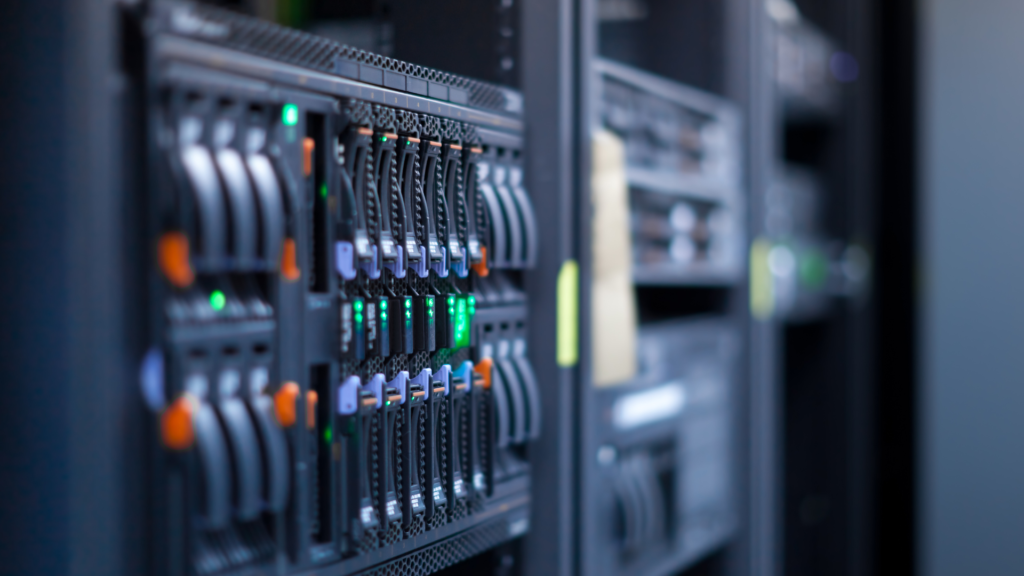
The Reasons for Colocation
Before the widespread adoption of colocation, computer and networking equipment were typically housed in an on-premise data center in a commercial office building. Housing critical technology infrastructure in office buildings presents many challenges.
Power Failures
First, commercial office buildings are prone to power outages due to utility failures and routine building maintenance. These outages mean that customers either experience downtime in their infrastructure or are required to invest in expensive battery backup systems and power generation equipment. Backup solutions needed to power infrastructure for extended periods are often financially impractical. Most customers invest in backup power that allows them to sustain only brief outages or brownouts and allows time to shut down equipment gracefully.
Insufficient Cooling Infrastructure
Commercial office buildings are also not equipped with the cooling infrastructure for dense computing environments. Many customers with on-premise data centers rely on the office building’s central HVAC system, supplemented by a consumer-grade portable wall or split AC units. Providing proper and consistent data center cooling requires you to invest in expensive data center-grade cooling equipment, which is typically impractical from a space and cost perspective. Also, it may not meet with approval from the landlord.
Additionally, hot aisle/cold aisle containment infrastructure is required. Installing containment solutions in commercial office space is often impractical, making a dedicated colocation facility a better choice.
Lack of Internet Redundancy
Customers typically want redundancy for the internet connecting their core infrastructure. Many office buildings offer only one or two carriers. Adding additional carriers frequently requires cost-prohibitive construction.
Even if multiple carriers are available, they often traverse the same path out of the building. A single path means a single point of failure if the cables are damaged. Connecting directly to cloud and SaaS providers is also typically impossible from a commercial office building, as they are not built-in to many office buildings.
Security Concerns
Commercial office buildings also typically lack the security to keep data safe. As servers typically house the company’s most important customer data. Housing them in a closet without biometric scanners, security cameras, and a badge system can be risky. Insufficient security measures may cause you to fail compliance audits.
Other Drawbacks
There are several other drawbacks to using commercial office space as a data center. Theft, flooding, accidental damage to equipment, and more are all prevalent issues that cause outages, downtime, and lost productivity.
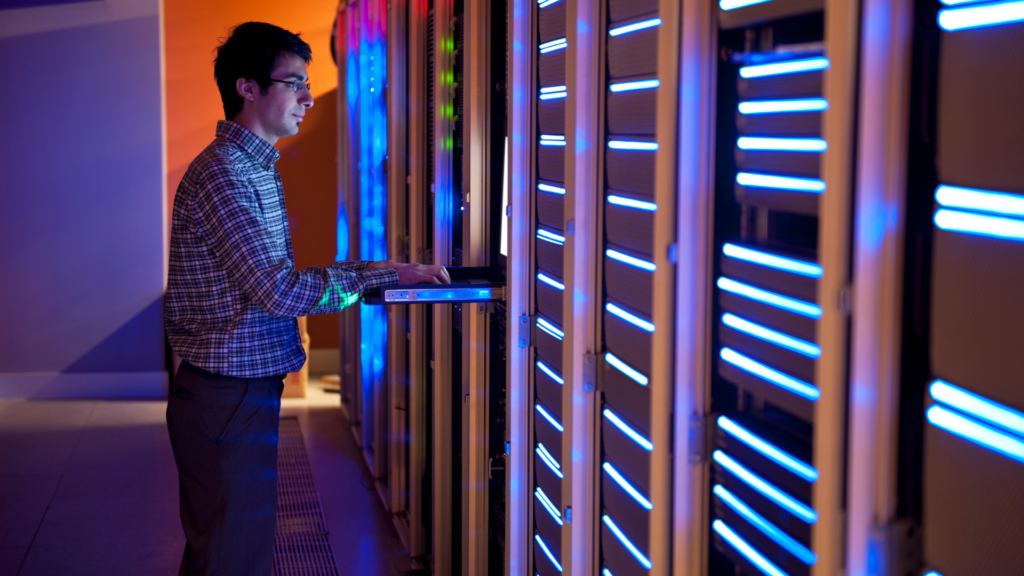
Colocation to the Rescue
A colocation solution solves these challenges. Colocation providers can afford to acquire the best, most redundant equipment, as they can spread the cost over many clients. Colocation facilities are built with enormous power generation and cooling capabilities, with multiple redundancy points. In the event of a prolonged outage, many offer backup generators powered by diesel for indefinite runtime on backup.
Colocation facilities also attract dozens of carriers to their site. A well-connected colocation facility provides customers with fiber, DIA, MPLS, and other connectivity options from a wealth of service providers. Additionally, many offer direct connections with cloud providers, called cloud on-ramps. Cloud on-ramps allow customers to connect to AWS, Azure, Google, Oracle, and other public clouds and SaaS providers with the lowest latency possible.
Colocation facilities also invest a tremendous amount in security. Badge readers, biometric scanners, security cameras, mantraps, and more are all standard in modern colocation facilities.
How are Colocation Services Priced?
Colocation services pricing is based on space, power, connectivity, the quantity of IP addresses, and added services. Let’s explore each category in detail.
Space
Data center space is often sold by the “rack” or the vertical shelf that stores data center equipment. A standard data center rack is 19 inches wide, which matches the width of most network and compute infrastructure. The rack height is measured in rack units, shortened to RU.
A standard rack unit is 1.75 inches. A typical data center rack is 42 RU, but measurements of 48 RU up to 60 RU exist. Traditional data center racks are 36 inches deep, but some providers may offer deeper racks at your request. Customers will typically rent an entire rack or multiple racks.
Although most colocation facilities are highly secure, many customers prefer fully enclosed network racks. An enclosed rack with walls and roof, complete with a fully locking front door, is referred to as a cabinet. Cabinets are perforated to allow proper cooling of the equipment.
Colocation providers will typically provide the rack or cabinet enclosure, or allow you to bring your own enclosure.
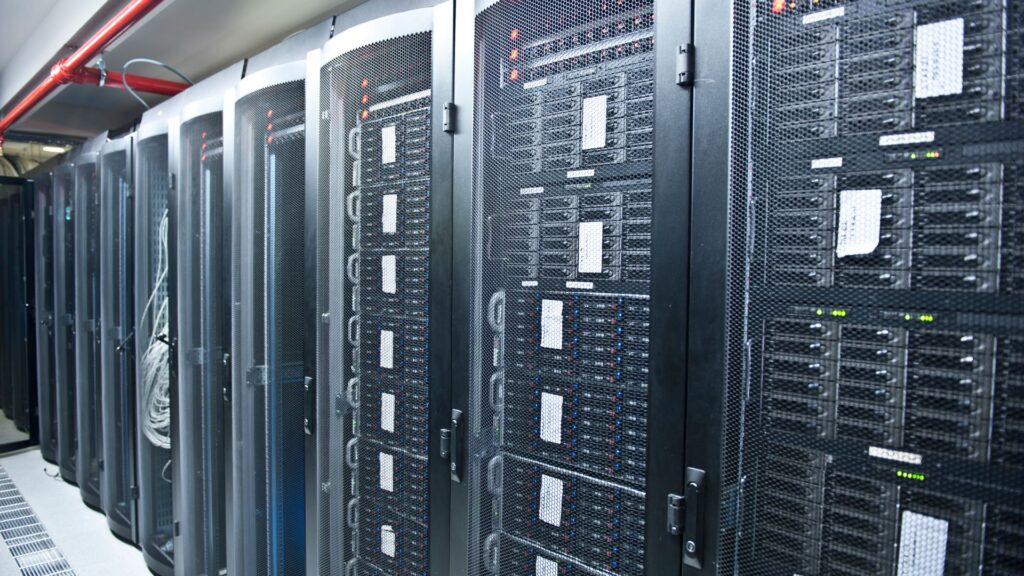
Partial Rack Colocation
Many providers will rent partial racks to clients, meaning your equipment will be in the same rack as other customers. This allows you to purchase only the space you need and save on cost.
Typical partial rack space configurations include:
1 RU / Single Server Colocation
1 RU colocation is perfect for customers needing only a single server. A small edge computing deployment or a web server hosting application is a good use case for a 1 RU colocation deployment. 1 RU colocation pricing starts at around $99, but varies based on market, power, and connectivity needs.
2 RU Colocation
2 RU colocation provides enough space for a server and a network appliance, or two servers. A 2 RU footprint might be appropriate for a slightly more dense edge computing deployment. You can expect to pay $200 per month or more for 2 RU colocation.
4 RU Colocation
4 RU colocation accommodates multiple servers plus redundant network devices like firewalls or switches. A 4 RU footprint might be appropriate for an edge computing deployment or a small disaster recovery site. 4 RU colocation starts at around $295 per month.
1/4 Rack Colocation
1/4 Rack colocation is also called a quarter cabinet or quarter cab. A quarter cabinet provides roughly 10 RU of space. A quarter cabinet could meet the needs of a startup or a company with modest data center space requirements. You can find 1/4 rack colocation solutions for around $400 per month.
1/3 Rack Colocation
1/3 rack colocation provides approximately 14 RU of rack space. A 1/3 rack footprint might be appropriate for a startup or a small colocation deployment. It may also be a fit for a secondary disaster recovery site.
1/2 Rack Colocation
1/2 rack colocation provides between 20 RU and 22 RU of space. A half rack offers enough room for many colocation use cases. I find that once customers get to this size, they are likely better off getting a dedicated rack, especially if they plan to grow. A 20 RU colocation solution starts at around $450 per month.
We are happy to price out partial and full rack options for our clients to determine which makes the most sense.
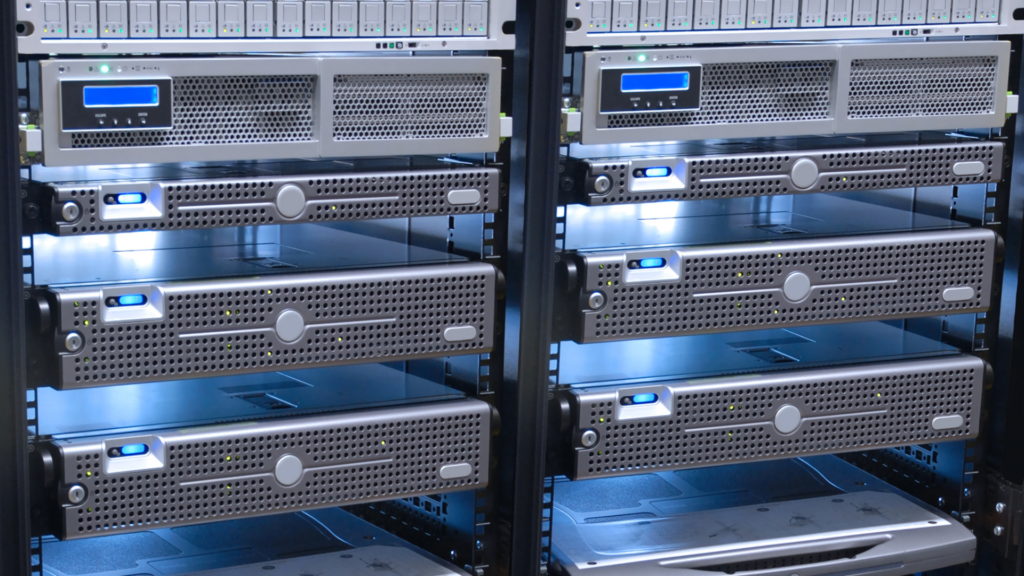
What are the Benefits and Drawbacks of a Partial Colocation Rack?
Partial racks are an excellent option for customers with minimal space requirements or a lower budget. There are some downsides to sharing a rack with another business, however. There is more risk that your equipment could get damaged or a network cable could get unplugged.
Additionally, there is a slightly increased security risk. Some providers offer lockable cabinets called mini-cabs for their customers purchasing partial racks. Lockable cabinets mitigate some of the dangers of having a shared rack.
Private Data Center Cages
Customers requiring more space or specific security requirements can purchase a private cage. The data center cage is a metal enclosure that surrounds the network racks or cabinets. Configurations vary and are customizable, including options for roofs and floors. These are typically built to order and come in various sizes and specifications. Private cages add security, including biometric scanners, locks, security cameras, and more, on top of the security at the data center entrance.
Private cages also provide you with a bit more space in which to work, and a little bit of storage. If you are looking for three or more cabinets, or have the security needs outlined, a private colocation cage may be right for you.
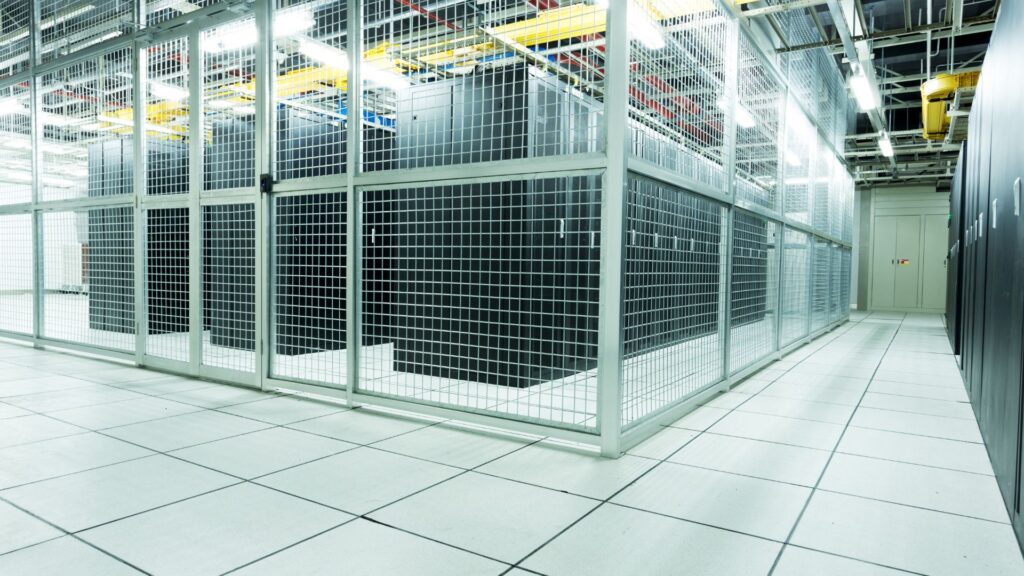
Private Data Center Suites
Finally, some colocation providers offer private suites. A private suite is a private room walled off from other tenants. The private colocation suite provides the highest degree of customization but is also the most expensive solution. A private suite is a fit for customers with a very large colocation footprint.
A private suite may also include a dedicated workspace for staff visiting or working from the data center. Consider a colocation suite if you need ample space or have rigorous security compliance requirements.
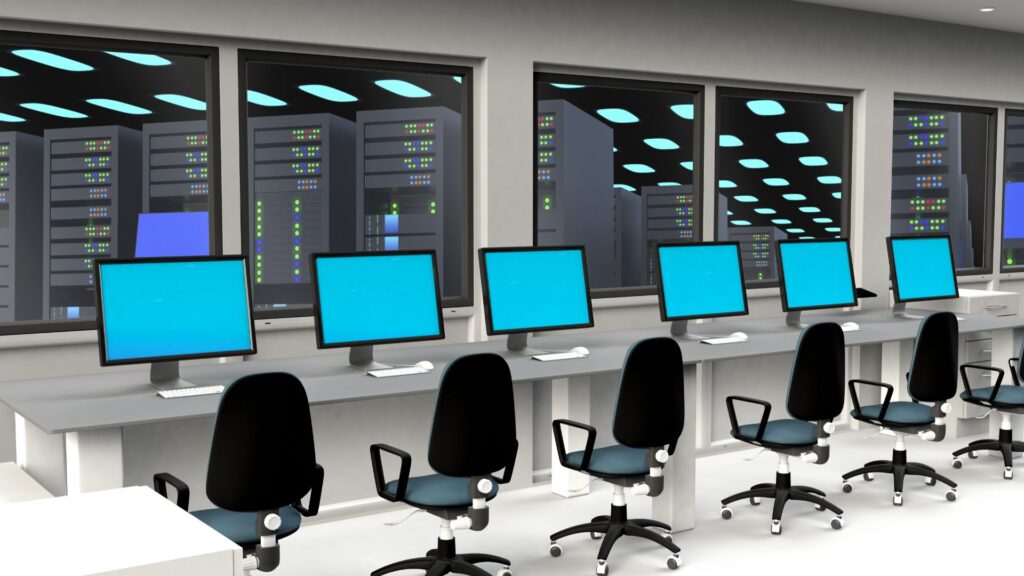
The ultimate in security for data center suites is called a Sensitive Compartmented Information Facility, or SCIF. This is a secure room designed to guard against electronic surveillance. It is fully encased in hardware that prevents electronic signals from entering or leaving. A SCIF is typically used only for highly classified data center use cases.
Power
Power is usually an important consideration when obtaining data center quotes. Many colocation providers have more usable space than they do power capacity. This means that the provider may require you to take more space than you need if your power needs are high. Power is sold by the kilowatt-hour (kWh). Colocation quotes include a predetermined kWh per rack. The provider assesses monthly overages when you use more power than contracted. Overages bill at a higher rate, so negotiating a power configuration that meets your needs upfront is an essential part of the sales process.
The cost of power varies significantly by region and is one of the provider’s most significant fixed expenses. Price differences derive from population density, local government regulation, utility, and the power source (coal, nuclear, solar, natural gas, wind, and more). As such, data center pricing can vary significantly by location. Cities like New York, San Francisco, and Washington, DC, pay more for power than the national average, while places like New Orleans and Seattle have less expensive electricity costs.
Most colocation providers offer redundant power options, also called A/B power. Redundant power allows customer equipment to stay on if a power feed is down. Always confirm that your colocation quotes include redundant A/B power.
Connectivity
Connecting your colocation facility to your company and the outside world requires network connectivity. Some colocation facilities sell their own bandwidth. Others market themselves as carrier-neutral, meaning they partner with a host of third-party connectivity partners. The colocation provider can provide a list of connectivity options. Ensuring that your corporate connectivity provider for MPLS, cloud service provider, or other services is on-network with the colocation facility is an important consideration when choosing a colo.
Connectivity sells in Megabits per second (Mbps) or Gigabits per second (Gbps). How much connectivity you need is dependent on the use case and applications. Connectivity is often sold as fixed (meaning the data rate is capped at the agreed-upon limit).
Connectivity is also sold as burstable. Burstable connectivity allows customers to exceed the agreed-upon connectivity limits. A burstable connection will enable customers to use more than their fixed bandwidth for short periods.
Burstable connectivity options are typically billed based on a percentage utilization of the network, with 90% and 95% utilizations being typical. Suppose a customer purchased a 100 Mbps connectivity option burstable to 1 Gbps and billed based on 95% utilization. In that case, the client can use up to 1 Gig of connectivity from time to time, and as long as they use 100 Mbps or less 95% of the time, they won’t pay for the overage.
Understanding the bandwidth included in the service and how overages are billed is critical, as this is one of the areas where customers most frequently incur additional monthly charges. Brightlio’s team of data center consultants can assist in picking the optimal connectivity solution for your requirements.
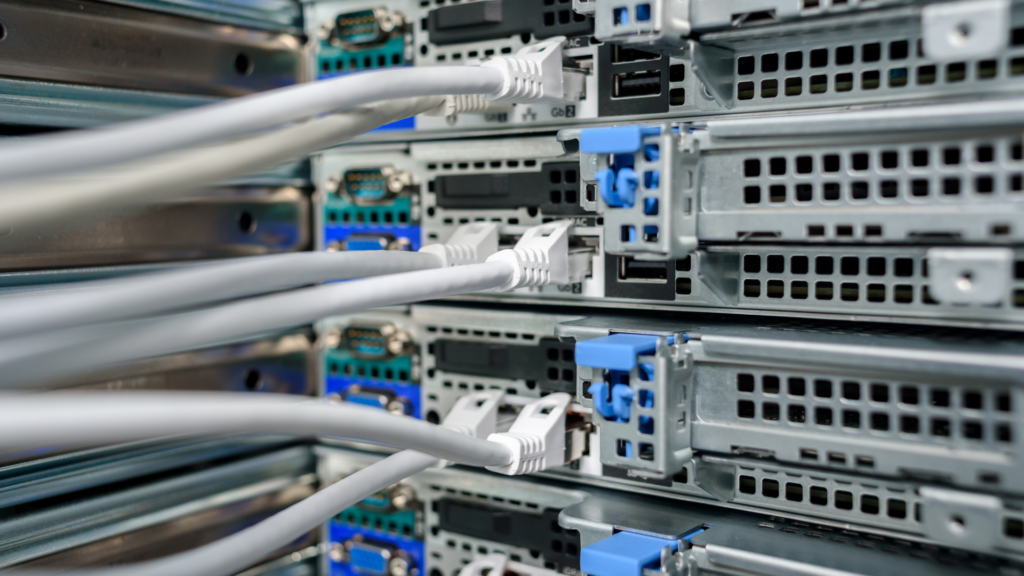
Cross Connects
Cross-connects are another type of connectivity. Rather than connecting you to the outside world, cross-connects are physical cable connections that connect you directly to other providers in the colocation facility. These allow you to connect to network connectivity providers, cloud service providers, SaaS providers, and more, without having to leave the facility.
The price of cross-connects varies by provider, but $100 to $300 per cross-connect per month is typical.
IP Address Space
Colocation providers will sell you IP address space, or you can provide your own IPs. Many providers include 5 IPs on a /29 network as part of their standard offering. Additional IPs are available for purchase at an added expense.
Data Center Services
Many colocation providers offer value-added services with their colocation offerings. These are meant to save you trips to the data center or remediate downtime more quickly. Two examples are remote hands and managed colocation services.
Remote Hands
Remote hands is an onsite engineering service purchased from the colocation provider. A technician or engineer that works for the provider, typically with Level 1 or Level 2 technical skills, assists you with various basic tasks, including swapping hard drives or power supplies.
Remote hands sell by the hour or in a block of hours. Some colocation providers will bundle in a small number of remote hands hours per month as part of their service or offer them on time and materials basis as needed.
If you think your company will require remote hands services, understanding the remote hands fees upfront is essential, as hourly rates vary significantly by the provider. Also, you can negotiate some included remote hands hours in the service as part of the sales process.
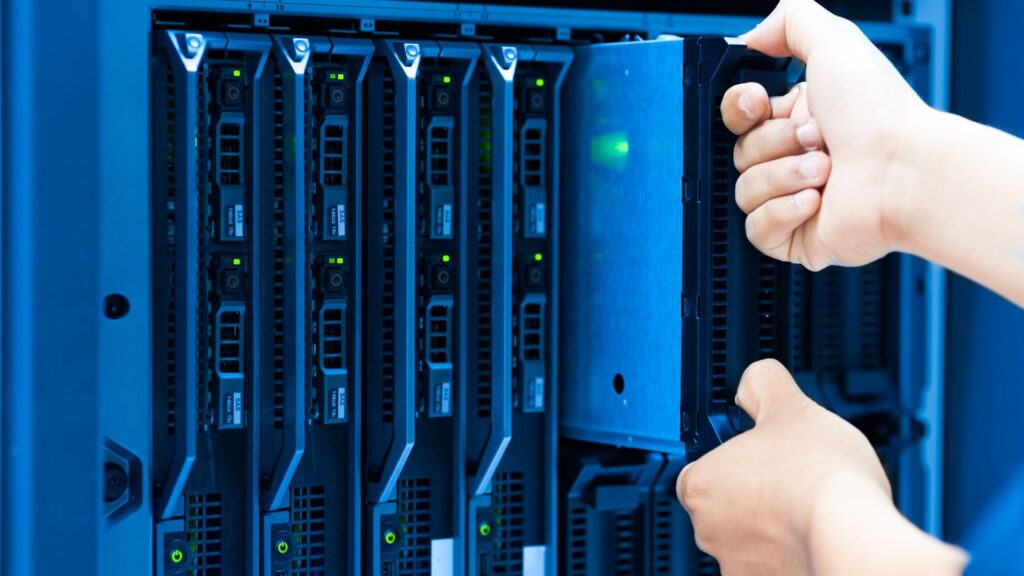
Managed Colocation Services
Managed colocation services are an added service option from many data center providers. Where remote hands services are more reactive (you call them when you need assistance), managed services are more proactive. The service provider monitors and maintains your equipment, and alerts you with any issues. The managed service provider even takes care of routine patching and upgrades.
In the event of a hardware or software failure on your equipment, remediation typically defaults to the support contact with the hardware or software manufacturer. It is important to keep those maintenance contracts active, even if you have a managed colocation service.
Data Center Tiers
There is significant variability between data center providers and locations regarding quality and redundancy. To help customers compare facilities, the Uptime Institute created data center Tier standards and a Tier Certification process. The Uptime Institute has issued over 2,500 Tier Certifications to facilities in 110 countries worldwide. These Tiers are understood in the industry. Any reputable colocation provider can tell you their facility’s Tier.
There are four Tiers, and colocation prices get higher as you move to higher Tiers. An overview of the Tiers is as follows:
Tier I – Basic Capacity
Maintenance or repair work requires site-wide shutdowns in a Tier I facility. There is little redundancy so failures will impact the entire site.
Tier II – Redundant Capacity Components
In a Tier II facility, maintenance requires site-wide shutdowns. However, onsite redundancy mitigates some failures.
Tier III – Concurrently Maintainable
All capacity components and distribution paths can be taken offline for maintenance in a Tier III facility without impacting operations. The site is still susceptible to downtime due to equipment failure or operator error.
Tier IV – Fault Tolerant
The highest Tier standard, in a Tier IV facility, each data center component can be maintained or replaced without impacting operations, and all equipment is fault tolerant.
Which Tier is Right for You?
While there may be some customer use cases where a Tier I or Tier II site might make sense, we recommend Tier III and Tier IV facilities to most of our clients. When you purchase colocation services, you are paying for the uptime and reliability you won’t get at a commercial office building.
Tier III and IV locations are generally superior across the board. They will have better-trained staff, better security, and more excellent amenities. Our team can help you price out colocation options at different Tiers to determine which is right for you.

Physical Security
Another benefit of colocation are the strict physical security measures that are in place. These safeguard both your data, and your physical property. Colocation data centers have a layered approach to physical security, with multiple security measures in place.
The layered approach may include the following:
- Perimeter security: Perimeter fencing with 360-degree view cameras helps ward off intruders and provides footage of activity outside the premises.
- Facility entry screening: All entrances require a personalized security badge that provides access to only necessary areas of the colocation center. Visitors are adequately screened before being granted access badges. All items taken in and out of facilities are examined and weighed by on-site security personnel.
- Secure corridors: Security personnel and mantraps are located at various entrances to maintain traffic flow and prevent unauthorized individuals from accessing secure areas.
- Computer room access: The computer room, also known as the server room or suite, is only accessible through dual authentication by badge and/or biometric fingerprint scanner.
- Server rack level access: This is the final layer of authentication within the computer room that’s accessed by a key lock or card reader and biometric scanners. Video cameras also monitor server racks.
This holistic and multi-layered approach employed by data centers ensures that both the intangible data and its physical housings are properly protected.
Other Items to Consider When Choosing A Colocation Partner
When building your colocation strategy, there are several less obvious items to consider. We developed the list below based on our experience with many colocation providers.
Location
The location of your data center is an important consideration. Many people choose a data center that is close to their home or office. While this can be convenient for trips to the colo, it may not always be the best decision.
First, having a facility that is close to your office does not provide for geographic redundancy. If you live in an area that is prone to earthquakes or other natural disasters (places like Los Angeles, San Diego, and Silicon Valley come to mind), then it may make sense to colocate in a different geography. Cities like Denver, Phoenix, and Salt Lake City offer a much lower natural disaster risk profile.
There are also significant costs differences in colocation pricing based on location. Power costs in Dallas, for instance, are much lower than in places like Northern Virginia. Power is a key driver of colocation pricing, so the local power rates will greatly impact costs.
Finally, you should consider latency to your customers and users. Putting your data center closer to the people and applications that need to access the data will lead to substantial performance benefits.
Parking
Many colocation facilities are in dense metropolitan areas. In many of these facilities, parking can be difficult and expensive. There are also safety concerns when parking at night or the early morning in some data center locations.
The cost and hassle of parking add up. Please be sure to look for facilities with free or low-cost parking, parking that is near the data center entrance, and secure parking.
Accessibility
Customers typically need to bring heavy network and computer infrastructure pallets into the data center. Hauling equipment through long parking lots, down long hallways, or in tiny elevators gets frustrating quickly.
Ask to see the freight areas of facilities you consider seriously. Ensure the facility has the loading dock, ramps, and freight elevators to accommodate your installation and ongoing maintenance.
Expansion
As your colocation needs expand, so will your need for space. Adding racks or cabinets directly adjacent to your initial footprint, rather than in some other part of the data center, will make servicing infrastructure easier and save on cross-connect fees. Many colocation providers will reserve space next to your initial footprint and offer you a right of refusal on purchasing adjoining space down the line. Discuss this with your provider during the data center quoting process.
Hot Aisle and Cold Aisle Containment
How are hot air and cold air contained in the data center Containment? Containment affects both the runtime of your equipment and the comfort level of your staff working in the facility. Some facilities do a much better job of this than others. Visit the colocation floor and observe the conditions for yourself.
That said, don’t get too concerned if the temperature is a little warm. Remember, the air is being conditioned for servers. These function well at up to 82 degrees. Many providers are increasing the temperature within acceptable ranges in order to save energy.
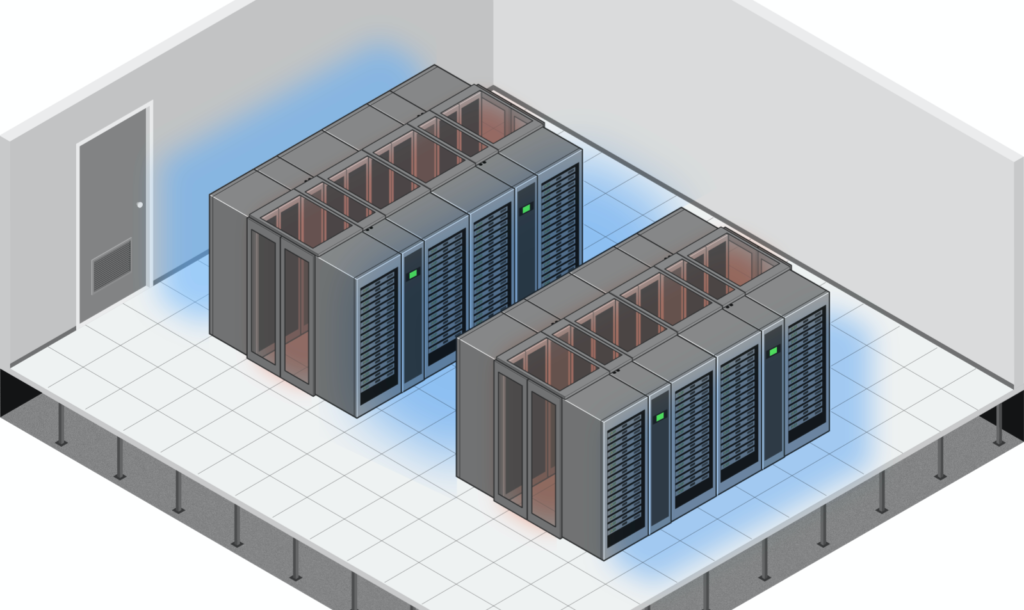
Meeting and Working Space
You will likely need to have meetings at the data center from time to time. Your staff may also need to work from the data center for several days or weeks out of the year. Inspect the meeting rooms and workspaces. Understand the process to reserve the space and if there are any added fees.
Shipping and Receiving
You will likely need to receive packages at your data center. Ask about the process of receiving packages at the facility. Ask to see the shipping and receiving area and speak to the team that handles shipping and receiving. The quality of the team and processes in the shipping and receiving department varies greatly. It can become frustrating to deal with deliveries to a colocation facility that does not have its act together when it comes to receiving packages.
Friendliness of Technical and Security Staff
You will need to engage with the technical and security staff frequently. You will often do so under stressful circumstances, like an outage or maintenance. Ensuring that the team is one you are comfortable with is a differentiator between facilities.
There is also a correlation between unhappy staff and the quality of the facilities and their processes. If the onsite team seems disgruntled, it’s often a sign that the facility is not well run. This will manifest itself in other parts of your service experience.
Amenities
The amenities at colocation facilities can vary. Some have break rooms with complimentary coffee and snacks. Some have a lounge with video games, pool, table tennis, and other activities. While not primary decision criteria, these perks make spending time at the data center a little more enjoyable.
How can Brightlio help?
Brightlio is your data center consultant and telecommunications broker.
We have partnerships with the premier colocation providers globally. We deliver competitive colocation price quotes that meet your needs and budget.
Brightlio also offers related services, including network connectivity, cloud-on ramps, SD-WAN, and public cloud services. Our well-rounded services portfolio allows us to provide you with a complete technology solution.
There is never a charge for quotes or solution designs. Engage Brightlio today!
If you enjoyed this Ultimate Guide, you might also enjoy Brightlio’s Ultimate Guide to Unified Communications as a Service.
Recent Posts
Vancouver Data Centers: Colocation in the Pacific Northwest
Business Broadband Solutions: The Ultimate Guide
Let's start
a new project together



